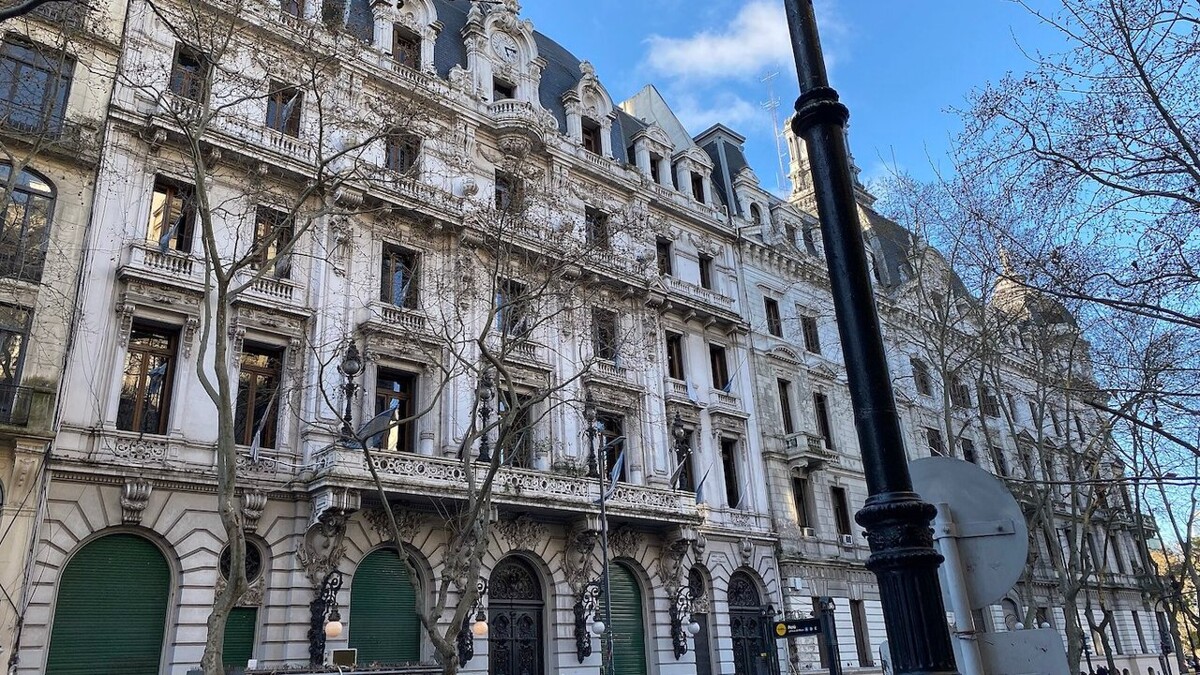
In the central patio, El Periódico will also operate, a bar conceived as a meeting point for artists, journalists, and neighbors. The Casa de la Cultura, a National Historic Monument since 1995, is a testament to a golden age of Argentine architecture and, at the same time, a living space for creation, memory, and civic encounter.
Today, after a comprehensive restoration, it has recovered its original splendor and reopened its doors as a space dedicated to art, literature, and contemporary creation. Located at number 575 on Avenida de Mayo, in the heart of downtown Buenos Aires, the building was commissioned by José C. Paz and designed by engineers Carlos Agote and Alberto Gainza, following the guidelines of the Paris School of Fine Arts.
Years later, it passed into the hands of the City Government and was consolidated as the headquarters of the Casa de la Cultura, a space dedicated to artistic and heritage promotion. After more than a century of history, the recent restoration returned the building to its original splendor. Inaugurated in 1898, it combined the Beaux Arts style with the technical innovations of the Industrial Revolution, becoming a symbol of the progress and modernity of the era.
The façades—one on Avenida de Mayo and another on Rivadavia—were designed in Paris and completed in Buenos Aires. Another distinctive feature are the coffered ceilings, hand-painted frescoes, and Masonic symbols that repeat in the decoration, in tune with the beliefs of its founder.
Throughout the 20th century, the building went through different destinies. In 1951, during the government of Juan Domingo Perón, it was expropriated and ceded to the General Confederation of Labor. Its ornamentation with gold leaf, mirrors, stained glass, and bronze chandeliers made it one of the most sumptuous spaces in the city. Below it, the eagle soaring over the clock represented the observing spirit of journalism, 'which sees everything.'
Inside, the structure is organized around a central patio, crossed by an iron and glass skylight that has now been restored piece by piece. The building has two basements, a ground floor, and six floors, where the editorial offices, printing workshops, printing and distribution areas of the newspaper originally operated. It also housed apartments for employees, medical and legal offices, a library with more than six thousand volumes, a meteorological observatory, and a gymnasium with a fencing salle.
The Golden Hall, inspired by the opulence of Versailles, was the stage for concerts, exhibitions, and conferences by illustrious figures. Its metal structure, manufactured by the French firm Muasan, Loren, Sevè & Compañì, arrived disassembled from Europe, as did the marble, stained glass, and ornamental hardware. It was the second building in the country to have an elevator and one of the first to incorporate compressed air systems for the internal sending of messages, an advanced communication network that anticipated email.
The exterior of the building exhibits a monumental language: unified balconies with electric lanterns—a novelty for the time—allegorical sculptures, and an imposing dome crowned by the goddess of wisdom, Pallas Athena, whose torch symbolizes truth and the light of knowledge.
The intervention covered more than half of its 12,522 square meters and included the cleaning and comprehensive repair of the façade, the renewal of the electrical and sanitary systems, the restoration of the central skylight—which recovered its 1,463 original glass pieces—and the enhancement of the carriage patio, the central hall, and the wall of commemorative plaques.
For the first time in the 21st century, the public can traverse a new corridor that crosses the building from side to side, connecting Avenida de Mayo with Rivadavia street through Pasaje Ana Díaz and Pasaje de los Carruajes.
Special: The Eye of Art
A symbol of the architectural splendor of Buenos Aires at the end of the 19th century, the building that once housed the newspaper La Prensa once again shines in its greatness. Its French-inspired façade, crowned by the figure of Pallas Athena and a Paul Garnier clock, was a witness to more than a century of political, social, and cultural transformations.













